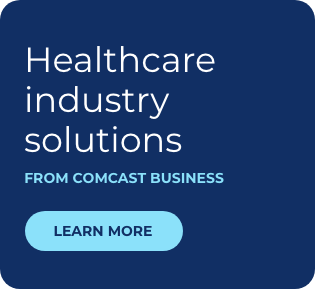Providing Holistic Patient Care Through Electronic Health Records

Electronic health records (EHRs) are changing the face of patient record-keeping. No longer are doctors’ offices repositories for large, bulky, paper-based patient files—those have been replaced by computer-based files accessible to authorized people simply by logging on to the office’s network. Transferring files between office locations or copying records for use by hospitals or other healthcare facilities is a thing of the past, with network-based files enabling instant access anytime, anywhere.
EHRs are essentially digital versions of patient records, making information available instantly and securely to authorized users over a network. Once considered the bane of many healthcare providers because of their complexity to implement and their mandated use, EHRs have, in fact, proven themselves essential in helping providers better diagnose and treat patients by having comprehensive patient medical records available at their fingertips.
EHRs increasingly are playing a critical role in the evolution of health care, enabling the adoption of value-based reimbursement of providers, rather than the costly fee-for-service payment structure that currently exists. EHRs give providers a clear understanding of patients’ medical histories, past treatments and outcomes, enabling them to diagnose and treat with more accuracy. This insight means fewer unnecessary tests and faster diagnoses, reducing the amount of time—and money—spent by both the patient and the provider.
According to the Office of the National Coordinator for Health Information Technology, as of 2015, 83 percent of office-based physicians had adopted EHR technology and almost all hospitals (96 percent) were using EHRs. Much of this adoption is directly the result of the Health Information Technology for Economic and Clinical Health Act (HITECH Act), which was created in 2009 to mandate the adoption of EHR and supporting technology and offered healthcare providers financial incentives for demonstrating "meaningful use" of EHRs.
Beyond the initial incentives, physician offices, hospitals and other healthcare facilities using electronic health records are now reaping the benefits in the form of more accurate diagnoses and fewer patient visits, resulting in higher patient satisfaction rates. Because patient information is added to the EHR at the point of care, records are consistently up to date and accessible to all the patient’s healthcare providers, who can use the information to provide more holistic care.
What’s more, the digital nature of the information ensures that healthcare providers anywhere have access to a patient’s information. A physician traveling on business or vacation, for example, can log on to an EHR system and access patient files or submit prescriptions remotely. Or, a healthcare provider in another state can view a patient’s health records to provide effective, quality care and treatment in times of emergency.
EHRs also reduce the amount of duplicate or unnecessary tests to diagnose and treat conditions. Because all of a patient’s healthcare providers have access to the same, comprehensive patient information, they can better and more accurately determine the best course of treatment and be aware of any potential adverse reactions without repeating ineffective tests or treatments.
EHRs shine the spotlight on an IT discipline called health informatics, which combines information technology and health care. Health informatics is being led by healthcare professionals who are adept at developing, implementing and managing IT software and applications in medical environments. As the landscape shifts to emphasize technology as more than simply a tool in providing quality healthcare—especially with the advent of big data analytics and cognitive computing—health informatics increasingly will be a crucial element of providers’ technology infrastructure.
EHRs provide innumerable benefits to providers and patients, but their benefits can be realized only if the technology is supported by a robust and stable network, so healthcare providers have access to the information necessary to accurately diagnose and treat patients.
A powerful network is needed to provide the performance necessary to power EHR and other technologies in health care. Dedicated and broadband connectivity solutions are helping clinics, physician offices and hospitals provide services related to today’s healthcare technologies. A fiber-rich IP network supports a full line of dedicated, broadband and Wi-Fi connectivity services, ensuring an always-on, always-connected environment that works for everyone. Healthcare facilities should look for a network services provider that can handle every aspect of the network, from provisioning to management, to help them focus on providing services and not on maintaining their network.
The adoption of EHR can mean better diagnoses and treatments, ultimately leading to better patient outcomes and cost savings for both the provider and the patient. Ensure your network can enable your EHR technology to keep up with the fast pace of healthcare informatics and the healthcare industry’s focus on providing better patient outcomes.
Photo credit: jfcherry via VisualHunt.com / CC BY-SA
Electronic Health Records (EHRs) have changed the face of healthcare, but a powerful network is critical to glean value.
Locked Content
Click on the button below to get access
Unlock NowOr sign in to access all content on Comcast Business Community
Learn how Comcast Business can help
keep you ready for what's next.











